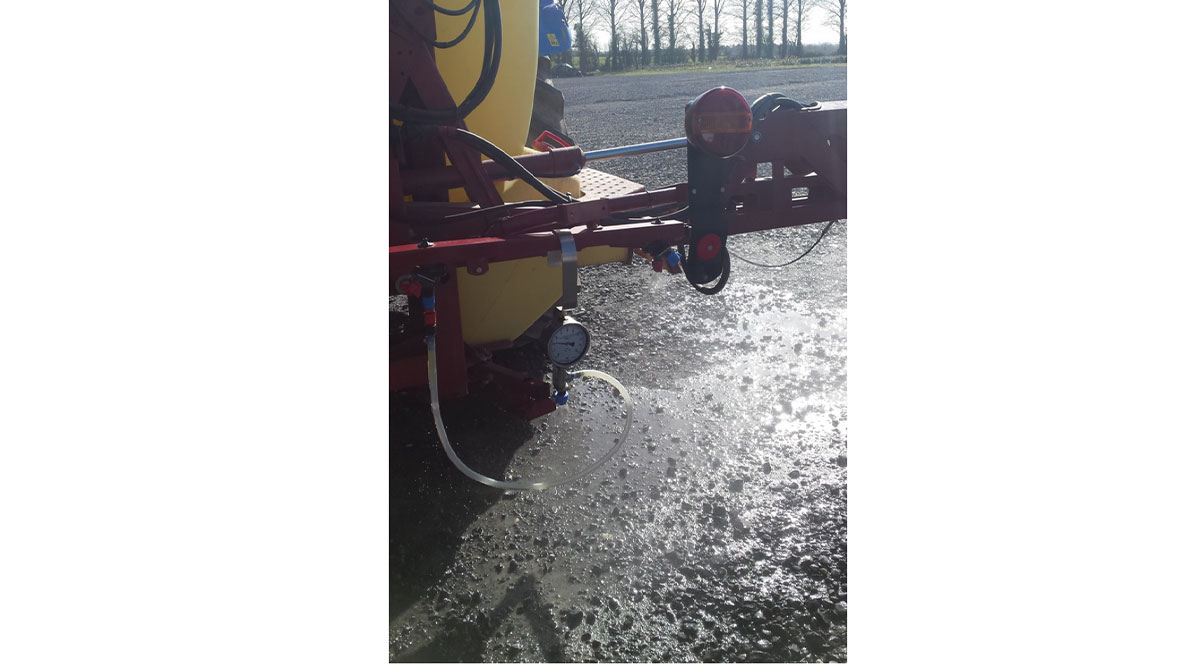Boom Sprayers play a key role in many land based work environments which includes Farms, Golf Courses, Maintenance of field sports surfaces and many other Horticultural enterprises. The cost of Pesticides and the importance of their uniform application is crucial for the safety of the operator, the environment, those nearby and all of us who rely on food produce from growers.
All boom sprayers greater than 3metres in width and orchard/blast sprayers must be tested and registered by 26 November 2016 before they can be used again for applying pesticides. After this date, only sprayers that have passed the test can be used to apply Pesticides or plant protection products registered with the PCS (Pesticide Control Service).
The Boom Sprayer test (EN-16122) is the requirement of the Sustainable Use Directive (SUD) as part of an integrated pest management approach. It is to ensure the use of pesticides are part of a more sustainable management approach. The Boom Sprayer test EN-16122 is compulsory throughout the European Union and will enhance the protection of the environment and those working on the land.
Owners will be responsible for booking tests which must be carried out by a Department of Agriculture approved tester. The Irish Institute of Sports Surfaces can now provide this service. Please email us on info@irishsportsurf.ie or 012817047 to book your sprayer for testing.


Inspectors Checklist & what is been checked!
Power transmission parts
The sprayer must have all O guards, U guards and PTO shaft covers in working order to protect the operator from potentially fatal injuries.
Pump
The pump is essentially the heartbeat of the workings for essential components such as nozzle pressure, agitation, chemical induction and tank washing.
The pump should provide the correct displacement for the working pressures needed to give the correct nozzle output.
A simple test for the operator is to check the nozzle output in litres per minute using a graduated cylinder and a stopwatch.
If the nozzle output is within 10% of the recommended ISO range, the pump is likely to be functioning well and will pass the test. Pumps with fluctuating pressures and poor output may need attention to the pump pistons, diaphragm or pulsation devices.
This test will also check that nozzles are not blocked or worn. If the sprayer has one or two problem nozzles they should be inspected for blockages or replaced if worn.
A worn nozzle will generally give more output in litres per minute because the opening has increased in size over time.
Agitation and mixing devices:
The agitation devices on a sprayer mix the chemical and water into the correct concentration for use. A common fault is that excessive air caused by leaks or faulty O-rings creates excess foaming in the tank.
Sprayer Tank
The sprayer tank holds and mixes the pesticide. A visual inspection will identify any leaks needing repair. The tank lid will need a breather cap to avoid collapsing the tank. A strainer or basket filter must be fitted under the tank lid to prevent foreign material entering the tank.
The tank content level indicator must be clearly legible. The tank emptying bung should be easily operated by a cord or a lever system with no leaks.
If there is a chemical inductor fitted, it will be inspected for operation and function. This also applies to a can or jug washer.
It is important to note that only the features related to the specification of sprayer can be tested.
Sprayer control systems
The pressure gauge is vital for ensuring optimum output and calibration on the sprayer.
Common faults with the pressure gauge are the needle not returning to zero, jumpy gauges caused by pump line problems or no glycerol in the gauge itself.
Higher specification sprayers with electronic monitoring and controls must also prove that the output on the display screen is matching the output on the sprayer itself.
All wheel sensors and flow monitors need to be inspected.
Boom section controls must be operational and responsive. Most sprayers now have some level of in-cab controls and these controls must operate in accordance with the manufacturers’ design.
All control valves must be free from leaks which in most cases may require a simple O-ring replacement.
Spray lines
A sprayer will fail the test if any part is leaking. Spray lines are responsible for flowing chemicals to all boom sections and controls.
These spray lines should be checked for kinked or damaged pipes and connections.
The spray lines should not interfere with the spray pattern – all hoses should be joined over and not under the boom, which can affect the nozzles’ performance.
The pressure relief valves and boom section return pipes to the tank should all be functioning to protect the system.
Filters
The test will check that all the necessary filters are fitted and in working order. All filters must be cleaned prior to the test.
Damaged basket filters under the tank lid are common, as are torn meshes in pressure and nozzle filters. Partially blocked filters can affect nozzle output and the operating pressure on the sprayer.
Spray boom
The sprayer’s break back device is critical as it protects the boom if it meets obstacles in the field.
Nozzles must be spaced correctly on the boom; a standard flat fan nozzle with a 110 degree spraying angle will require 50cm spacing.
The working height of the sprayer boom should be 50cm over the target crop.
The boom nozzles must face in the same direction and angle. In the field, the boom must display adequate stability while maintaining the height selected by the operator.
The boom must also fold and lock in to a safe transport setting for travelling on public roads.
Nozzles
Sprayer nozzles are critical for delivering the proper coverage over the crop. Damaged, blocked or worn nozzles will adversely affect chemical distribution to target areas.
Sprayers fitted with multiple nozzle holders should have a complete set of nozzles for each type of spraying. Nozzles that are not within the 10pc threshold for output in litres per minute should be replaced.
All nozzle holders must be fitted with an anti-drip device that doesn’t leak while the boom sections are turned off.
